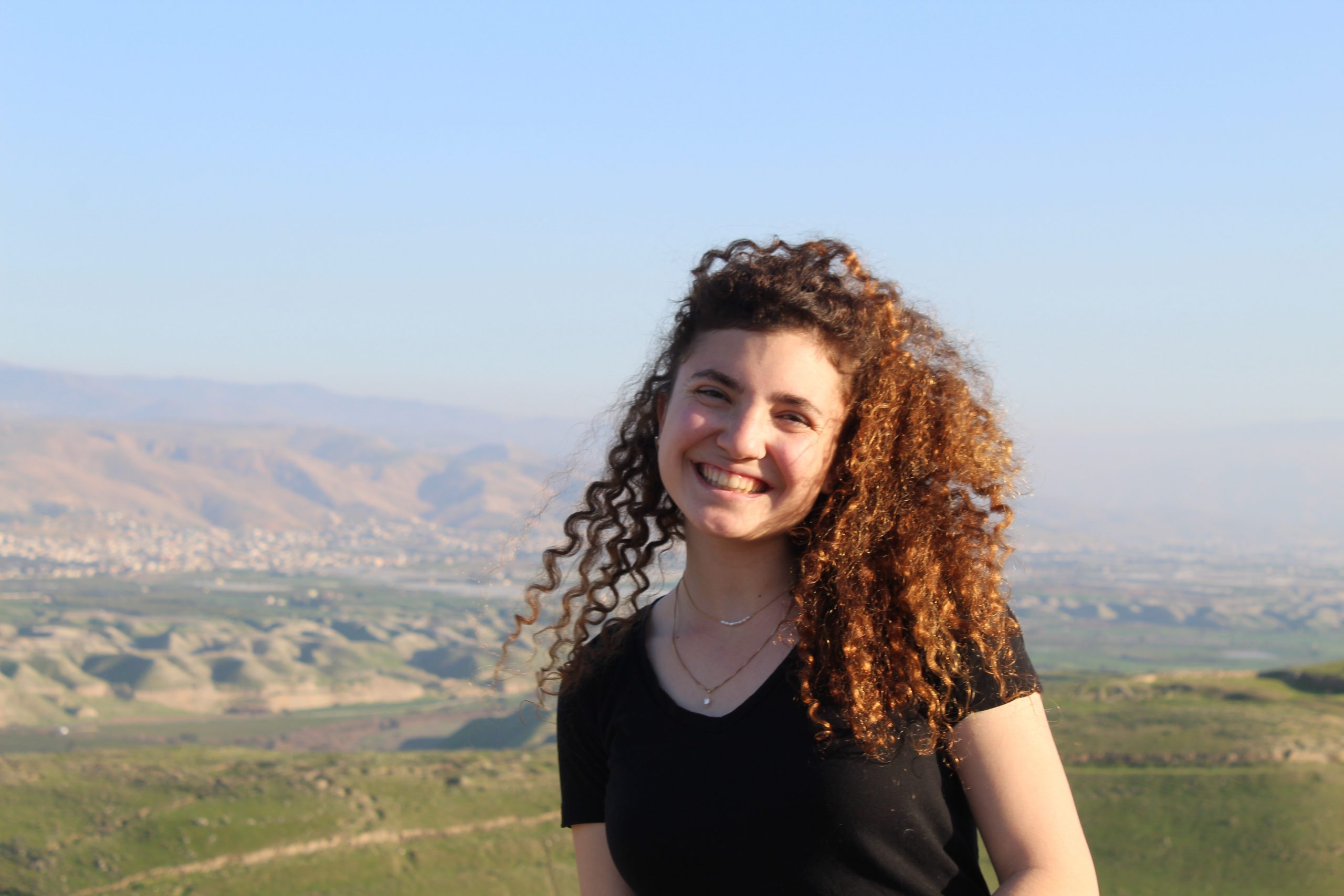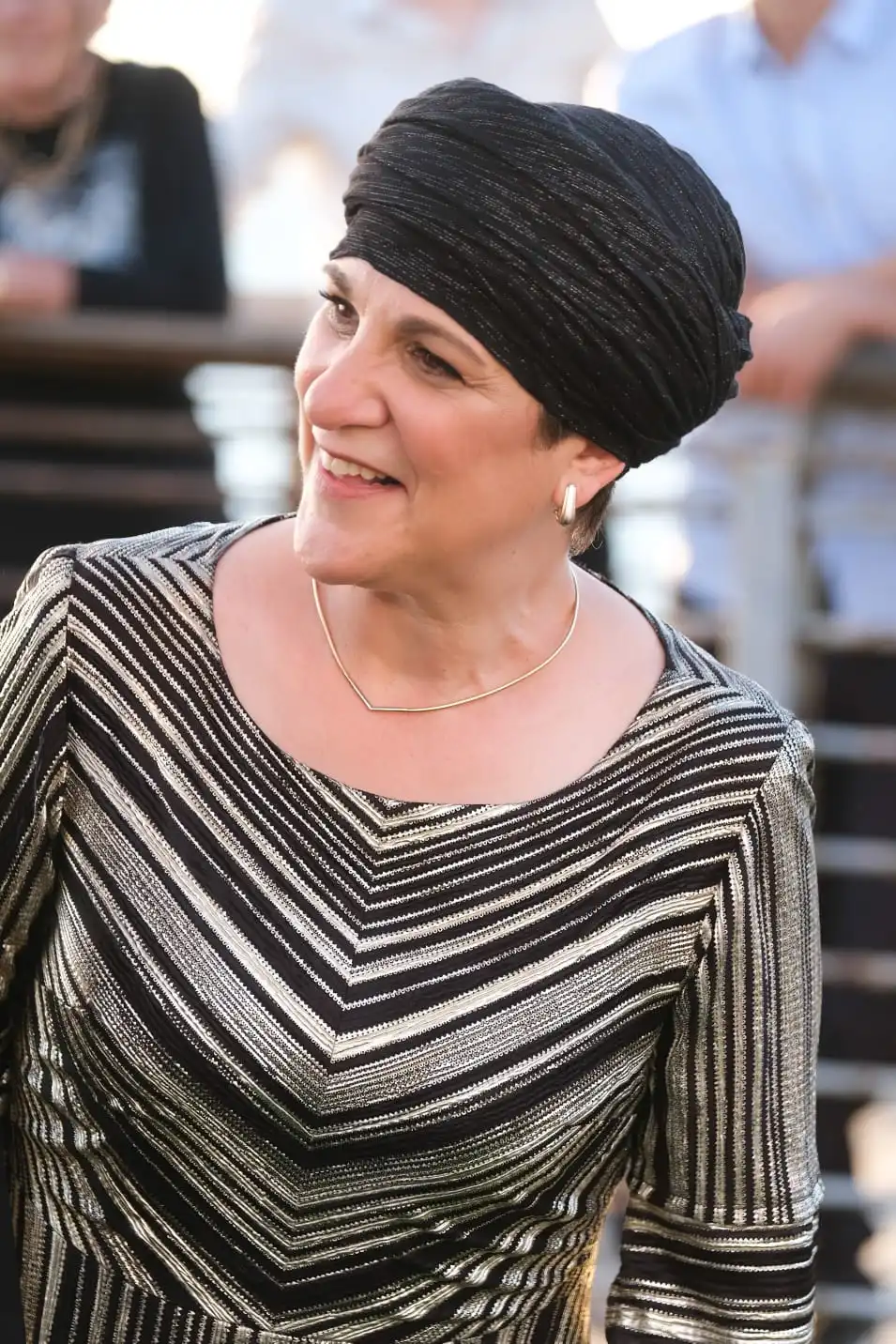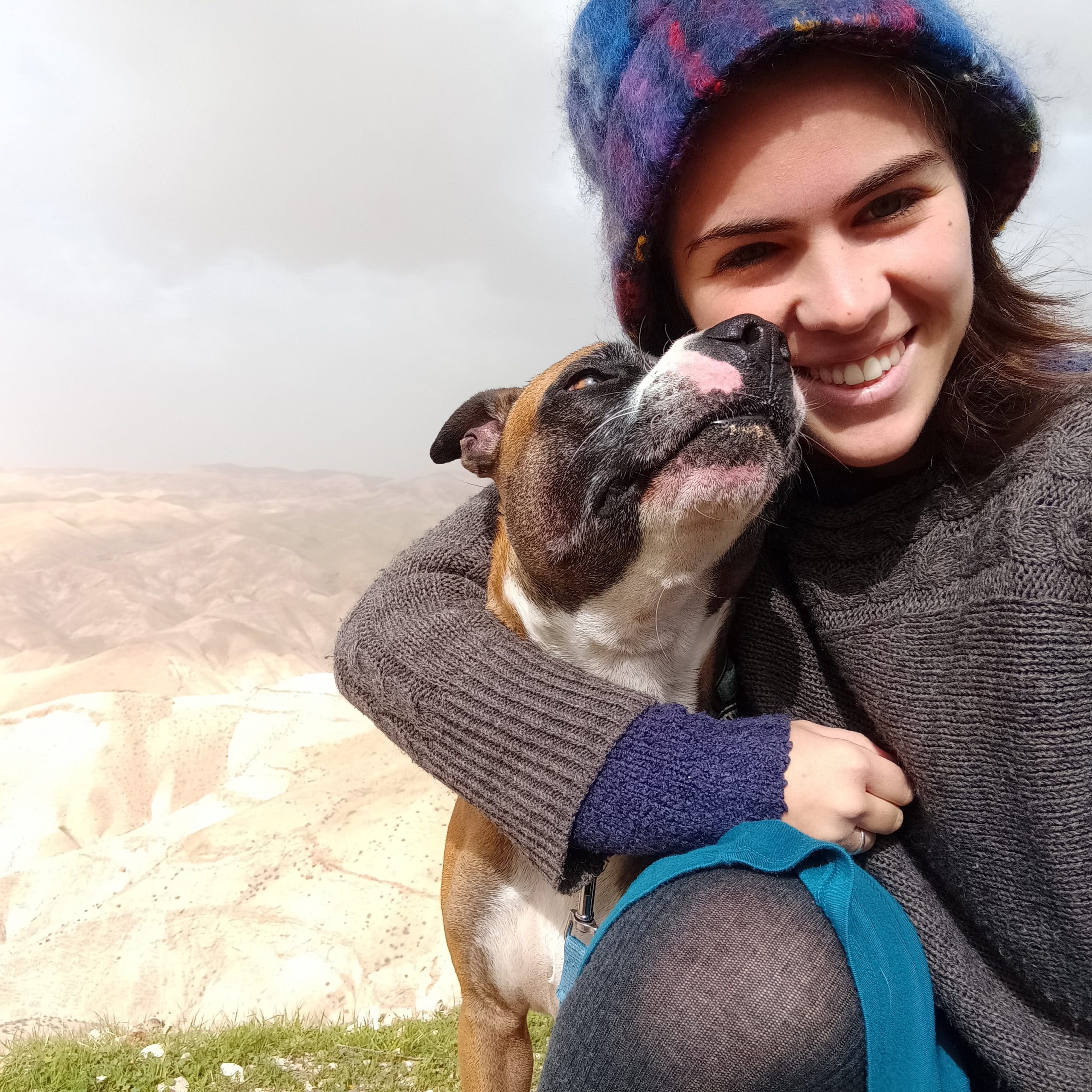סוכה ח
הָנֵי מִילֵּי בְּעִיגּוּלָא, אֲבָל בְּרִיבּוּעָא — בָּעֲיָא טְפֵי.
The Gemara answers: This applies only in the middle of the circle that has a circumference of twelve cubits, as the diameter of the circle is four cubits; but in order for a square inscribed within a circle to have a perimeter of sixteen cubits, the circle requires a circumference that is more than twelve cubits.
מִכְּדֵי כַּמָּה מְרוּבָּע יוֹתֵר עַל הָעִיגּוּל — רְבִיעַ, בְּשִׁיתְּסַר סַגִּי?
The Gemara asks further: Now, by how much is the perimeter of a square inscribing a circle greater than the circumference of that circle? It is greater by one quarter of the perimeter of the square. If that is the case, a circle with a circumference of sixteen cubits is sufficient. Why, then, does Rabbi Yoḥanan require a circumference of twenty-four cubits?
הָנֵי מִילֵּי בְּעִיגּוּל דְּנָפֵיק מִגּוֹ רִיבּוּעָא, אֲבָל רִיבּוּעָא דְּנָפֵיק מִגּוֹ עִגּוּלָא — בָּעֵינַן טְפֵי, מִשּׁוּם מוּרְשָׁא דְקַרְנָתָא.
The Gemara answers: This statement with regard to the ratio of the perimeter of a square to the circumference of a circle applies to a circle inscribed in a square, but in the case of a square circumscribed by a circle, the circle requires a greater circumference due to the projection of the corners of the square. In order to ensure that a square whose sides are four cubits each fits neatly into a circle, the circumference of the circle must be greater than sixteen cubits.
מִכְּדֵי כׇּל אַמְּתָא בְּרִיבּוּעָא אַמְּתָא וּתְרֵי חוּמְשֵׁי בַּאֲלַכְסוֹנָא, בְּשִׁיבְסַר נְכֵי חוּמְשָׁא סַגִּיא? לָא דָּק.
The Gemara calculates precisely how much greater the circumference must be in order to circumscribe the four-by-four-cubit square. Now, in every square whose sides each measure one cubit its diagonal measures one and two-fifths cubits, and in a circle that circumscribes a square, the diagonal of the square is the diameter of the circle. In this case, the circumscribed square measures four by four cubits; therefore, the diagonal of the square, which is the diameter of the circle, measures five and three-fifths cubits. Since the Gemara calculates the circumference of the circle as three times its diameter, a circular sukka with a circumference of seventeen cubits minus one-fifth of a cubit should be sufficient. The Gemara answers: Rabbi Yoḥanan was not precise and rounded the dimensions of the circular sukka to a number higher than the absolute minimum.
אֵימוֹר דְּאָמְרִינַן לָא דָּק פּוּרְתָּא, טוּבָא מִי אָמְרִינַן לָא דָּק?
The Gemara wonders: Say that we say that the Sage was not precise when the difference between the number cited and the precise number is slight; however, when the difference is great, do we say the Sage was not precise? After all, Rabbi Yoḥanan stated that the minimum measure is twenty-four cubits, a difference of more than seven cubits.
אֲמַר לֵיהּ מָר קַשִּׁישָׁא בְּרֵיהּ דְּרַב חִסְדָּא לְרַב אָשֵׁי: מִי סָבְרַתְּ גַּבְרָא בְּאַמְּתָא יָתֵיב, תְּלָתָא גַּבְרֵי בְּתַרְתֵּי אַמְּתָא יָתְבִי. כַּמָּה הָווּ לְהוּ — שִׁיתְּסַר, אֲנַן שִׁיבְסַר נְכֵי חוּמְשָׁא בָּעֵינַן! לָא דָּק.
Mar Keshisha, i.e., the elder, son of Rav Ḥisda, said to Rav Ashi: Do you hold that when a man sits, he sits and occupies one cubit, and consequently a sukka that seats twenty-four people must have a circumference of twenty-four cubits? In fact, three people sit and occupy two cubits. The Gemara asks: How many cubits are there in the sukka required by Rabbi Yoḥanan? There are sixteen cubits. But we require a sukka with a circumference of seventeen cubits minus one-fifth, as calculated above. The Gemara answers: He was not precise and rounded the figure down to the lower whole number; actually, the required circumference is four-fifths of a cubit larger.
אֵימוֹר דְּאָמְרִינַן לָא דָּק לְחוּמְרָא, לְקוּלָּא מִי אָמְרִינַן לָא דָּק?
The Gemara rejects this explanation: Say that we say that the Sage was not precise when the result is a stringency, e.g., he required a sukka whose dimensions are greater than the minimum required dimensions; however, when the result is a leniency, do we say the Sage was not precise? In that case, the lack of precision will lead to establishing a sukka whose dimensions are smaller than the minimum requirement.
אֲמַר לֵיהּ רַב אַסִּי לְרַב אָשֵׁי: לְעוֹלָם גַּבְרָא בְּאַמְּתָא יָתֵיב, וְרַבִּי יוֹחָנָן מְקוֹם גַּבְרֵי לָא קָחָשֵׁיב.
Rav Asi said to Rav Ashi: Actually, a man sits and occupies one cubit, and Rabbi Yoḥanan is not factoring the space that the men occupy in his calculation. In other words, to this point, the assumption has been that Rabbi Yoḥanan calculated the circumference of the sukka required to seat twenty-four people. Actually, he merely calculated the circumference of the inner circle formed by the twenty-four people seated.
כַּמָּה הָווּ לְהוּ — תַּמְנֵי סְרֵי, בְּשִׁיבְסַר נְכֵי חוּמְשָׁא סַגִּיא! הַיְינוּ דְּלָא דָּק וּלְחוּמְרָא לָא דָּק.
The Gemara asks: How many cubits are there in the circumference of the inner circle formed by a circle of twenty-four people? There are eighteen cubits. Based on the principle that for every three cubits of circumference there is one cubit of diameter, the diameter of a circle whose outer circumference surrounds twenty-four people is eight cubits. To calculate the circumference of the inner circle, subtract from the diameter the space occupied by two people, each sitting at one end of the diameter. The result is a diameter of six cubits. Based on the above principle, a circle with a diameter of six cubits will have a circumference of eighteen cubits. However, a circumference of seventeen cubits minus one-fifth of a cubit should be sufficient. The Gemara answers: This is the case where he was not precise, and in this case he is not precise when the result is a stringency, as instead of sixteen and four-fifths, Rabbi Yoḥanan required eighteen cubits.
רַבָּנַן דְּקֵיסָרִי, וְאָמְרִי לַהּ דַּיָּינֵי דְקֵיסָרִי אָמְרִי: עִיגּוּלָא דְּנָפֵיק מִגּוֹ רִיבּוּעָא — רִבְעָא,
The Sages of Caesarea, and some say that it was the judges of Caesarea, said that Rabbi Yoḥanan’s statement could be explained using a different calculation: The circumference of a circle inscribed in a square is one–quarter less than the perimeter of the square,
רִיבּוּעָא דְּנָפֵיק מִגּוֹ עִיגּוּלָא — פַּלְגָא. וְלָא הִיא, דְּהָא קָחָזֵינַן דְּלָא הָוֵי כּוּלֵּי הַאי.
while the perimeter of a square circumscribed by a circle is smaller than the circumference of that circle by half, i.e., if one adds half the perimeter of the square to the perimeter of the square, that is equal to the circumference of its circumscribing circle. Therefore, a circle with a circumference of twenty-four cubits would circumscribe a square with a perimeter of sixteen cubits, as prescribed by Rabbi Yoḥanan. The Gemara notes: And that is not the case, as we see that the circumference of the circumscribing circle is not that much. The actual circumference is closer to seventeen cubits.
אָמַר רַבִּי לֵוִי מִשּׁוּם רַבִּי מֵאִיר: שְׁתֵּי סוּכּוֹת שֶׁל יוֹצְרִים זוֹ לִפְנִים מִזּוֹ — הַפְּנִימִית אֵינָהּ סוּכָּה, וְחַיֶּיבֶת בִּמְזוּזָה. וְהַחִיצוֹנָה סוּכָּה, וּפְטוּרָה מִן הַמְּזוּזָה.
§ Rabbi Levi said in the name of Rabbi Meir: With regard to two craftsmen’s booths, one within the other, as potters would build two booths, an inner one used as living quarters and an outer one for plying their craft and selling their wares, the inner one is not fit for fulfillment of the mitzva of sukka, since the potter resides there year-round and it is not evident during the Festival that he is residing there for the sake of the mitzva of sukka. And since it a permanent residence, it is also obligated in the mitzva of mezuza. And the outer booth is fit for fulfillment of the mitzva of sukka, since he does not reside there year-round, and when he resides there during the Festival it is evident that he is doing so for the sake of the mitzva. Since it is not designated as a year-round residence, but rather serves as an entrance to his residence and a passage for merchants and merchandise, it is not considered a residence and is not obligated in the mitzva of mezuza.
וְאַמַּאי? תִּהְוֵי חִיצוֹנָה כְּבֵית שַׁעַר הַפְּנִימִית, וְתִתְחַיֵּיב בִּמְזוּזָה! מִשּׁוּם דְּלָא קְבִיעַ.
The Gemara asks: Why is the outer booth exempt from the mitzva of mezuza? Let the outer booth be considered like a gatehouse of the inner booth and therefore be obligated in the mitzva of mezuza. The Gemara answers: It is exempt because even the inner booth is not a permanent residence. It requires a mezuza because the potter resides there year-round; however, that alone does not render it a full-fledged residence that would obligate one to affix a mezuza to the outer booth as its gatehouse.
תָּנוּ רַבָּנַן: גַּנְבַּ״ךְ: סוּכַּת גּוֹיִם, סוּכַּת נָשִׁים, סוּכַּת בְּהֵמָה, סוּכַּת כּוּתִים סוּכָּה מִכׇּל מָקוֹם — כְּשֵׁרָה, וּבִלְבַד שֶׁתְּהֵא מְסוּכֶּכֶת כְּהִלְכָתָהּ.
The Sages taught: The booths represented by the mnemonic: Gimmel, nun, beit, kaf, which stands for a booth of gentiles [goyim], a booth of women [nashim], a booth of domesticated animals [behema], a booth of Samaritans [Kutim], a booth of any sort, each is fit for use as a sukka, provided it is roofed in the standard sense. None of them is disqualified due to the one who constructed it or the purpose for which it was constructed.
מַאי ״כְּהִלְכָתָהּ״? אָמַר רַב חִסְדָּא: וְהוּא שֶׁעֲשָׂאָהּ לְצֵל סוּכָּה.
The Gemara asks: What is the meaning of the term: In the standard sense? Rav Ḥisda said that it means: And provided that one established the booth to provide shade of a sukka from its roofing, it may be used to fulfill the mitzva of sukka.
״מִכׇּל מָקוֹם״ לְאֵתוֹיֵי מַאי? לְאֵתוֹיֵי: סוּכַּת רַקְבַּ״שׁ. דְּתָנוּ רַבָּנַן: סוּכַּת רַקְבַּ״שׁ: סוּכַּת רוֹעִים, סוּכַּת קַיָּיצִים סוּכַּת בּוּרְגָּנִין סוּכַּת שׁוֹמְרֵי פֵירוֹת, סוּכָּה מִכׇּל מָקוֹם — כְּשֵׁרָה, וּבִלְבַד שֶׁתְּהֵא מְסוּכֶּכֶת כְּהִלְכָתָהּ.
The Gemara asks: What does the phrase: A booth of any sort, come to include? What other booths are included in this generalization? The Gemara answers: It comes to include the booths listed in another baraita with the mnemonic: Reish, kuf, beit, shin, as the Sages taught: The booth known by the mnemonic reish, kuf, beit, shin, which stands for the booth of shepherds [ro’im], the booth of fig driers [kayyatzim], the booth of guards of fields [burganin], the booth of the guards of produce [shomerei peirot], a booth of any sort, each is fit, provided it is roofed in the standard sense.
מַאי ״כְּהִלְכָתָהּ״? אָמַר רַב חִסְדָּא: וְהוּא שֶׁעֲשָׂאָהּ לְצֵל סוּכָּה.
The Gemara asks again: What is the meaning of the term: In the standard sense? Rav Ḥisda said that it means: And provided that one established the booth to provide shade of a sukka, it may be used to fulfill the mitzva of sukka.
״מִכׇּל מָקוֹם״ לְאֵתוֹיֵי מַאי? לְאֵתוֹיֵי: סוּכַּת גַּנְבַּ״ךְ.
The Gemara asks: What does the phrase: A booth of any sort, come to include? The Gemara answers: It comes to include the booths listed in the first baraita cited above with the mnemonic gimmel, nun, beit, kaf.
הַאי תַּנָּא דְּגַנְבַּ״ךְ, אַלִּימָא לֵיהּ גַּנְבַּ״ךְ מִשּׁוּם דִּקְבִיעִי, וְקָא תָּנֵא ״מִכׇּל מָקוֹם״ לְאֵתוֹיֵי רַקְבַּ״שׁ, דְּלָא קְבִיעִי.
The Gemara explains: This tanna who taught and detailed the halakhot of booths of gimmel, nun, beit, kaf did so because the fitness of the booths of gimmel, nun, beit, kaf for use in fulfilling the mitzva of sukka is powerful and more obvious to him because they are permanent structures, even though their builders are not obligated in the mitzva. And he taught: Booths of any sort, to include the booths of reish, kuf, beit, shin, which, although they are seasonal and not permanent structures, may still be used to fulfill the mitzva of sukka.
וְהַאי תַּנָּא דְּרַקְבַּ״שׁ, אַלִּימָא לֵיהּ רַקְבַּ״שׁ, דִּבְנֵי חִיּוּבָא נִינְהוּ, וְתָנֵא ״מִכׇּל מָקוֹם״ לְאֵתוֹיֵי גַּנְבַּ״ךְ, דְּלָאו בְּנֵי חִיּוּבָא נִינְהוּ.
And that other tanna who taught and detailed the halakhot of booths of reish, kuf, beit, shin did so because the fitness of the booths of reish, kuf, beit, shin for use in fulfilling the mitzva of sukka is powerful and more obvious to him because those who constructed the booths are obligated in the mitzva of sukka. And he taught: Booths of any sort, to include the booths of gimmel, nun, beit, kaf, which, although those who constructed them are not obligated in the mitzva, may still be used to fulfill the mitzva of sukka.


















